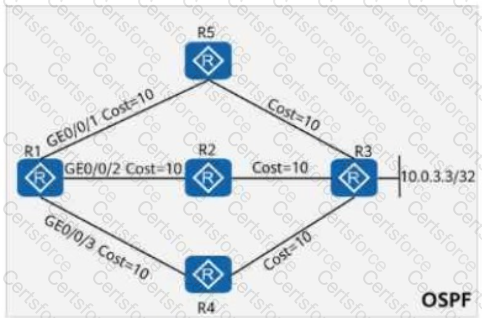To protect a device against the attacks of forged BGP messages, you can configure GTSM to check whether the TTL value in the IP message header is within the specified range. If the peer x.x.x.x valid-ttl-hops 100 command is configured on a device, the valid TTL value range of the detected message is [155, 255].
The figure shows the LSP information of R1 and R3 on an MPLS network. An administrator runs the ping -a 1.1.1.1 3.3.3.3 command on R1. Given this, which of the following statements is true?
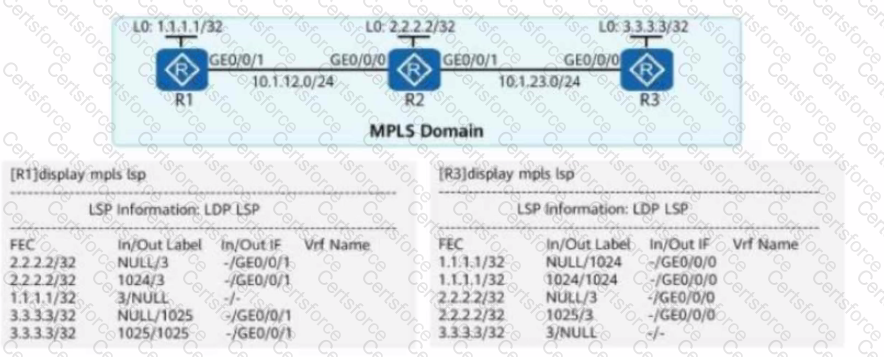
IPSG is a source IP address filtering technology based on Layer 3 interfaces. It prevents malicious hosts from forging authorized hosts' IP addresses to access authorized network resources.
BFD for OSPF refers to the association of BFD with OSPF to speed up OSPF's response to network topology changes. The OSPF neighbor relationship can enter the Full state only after the BFD session goes up. The OSPF neighbor relationship can go down only after the BFD session goes down.
On the network shown in the figure, VRRP is configured on Rl and R2, and the virtual IP address is 10.0.12.254. After the configuration is complete, the network engineer checks the VRRP status on R1 and R2, and finds that both devices are in the Master state. Which of the following is not a possible cause of this problem?
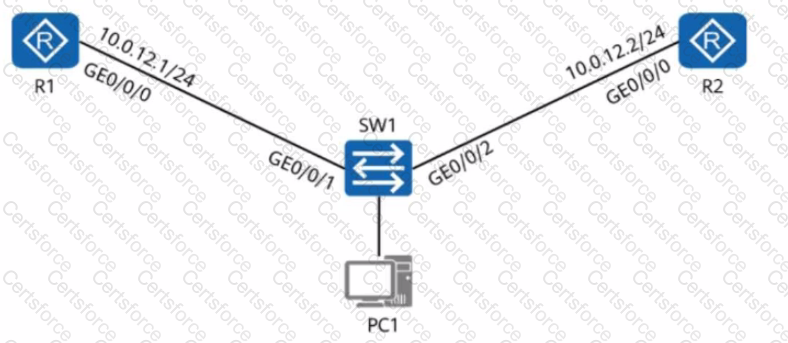
An administrator runs the display mpls Isp command to view LSPs on a device. The command output is shown in the figure. Which of the following statements are true?
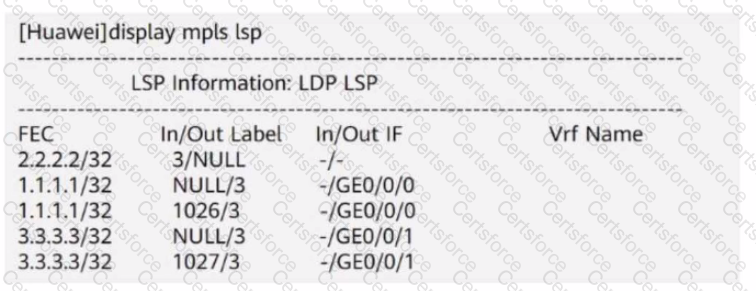
On the IS-IS IPv6 network shown in the figure, multi-topology is enabled on all routers.
The ipv6 default-route-advertise always level-1 command is configured in the IS-IS process of R4.
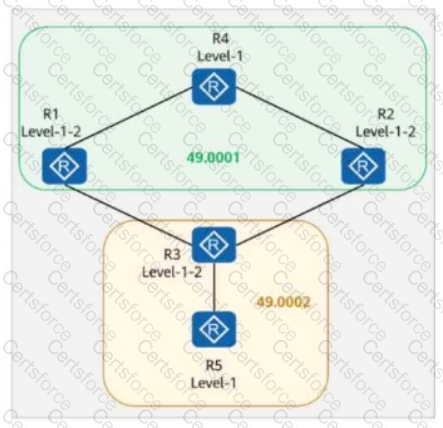
Which of the following routers does not have the default route in its routing table?
Which of the following is not included in OSPF Hello packets?
Options:
On the OSPFv3 network shown in the figure, area 1 is a common area. R2 generates an Inter-Area-Prefix-LSA to describe the routes of a network segment in the area. Such an LSA exists in both area 0 and area 1.

On the OSPF network shown in the figure, the cost values of links are marked. OSPF IP FRR is enabled on R1, and the maximum load-balancing 8 command is configured in the OSPF process. If a service passes through the path R1 → R5 → R3 to reach 10.0.3.3/32, which of the following is the backup outbound interface for the service?
